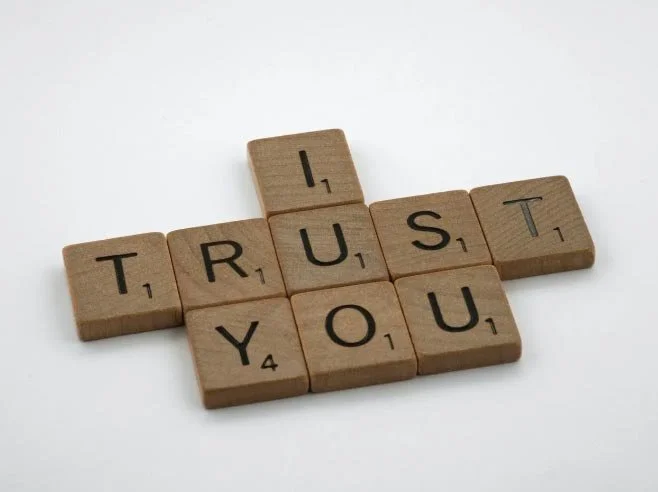Moving from Detail to Big Picture
As your career progresses and you are elevated to more senior positions your responsibilities widen.
You will likely be juggling multiple projects, staff, budgets and demands from on high. This can prove challenging for individuals that are more naturally wired to be detail-oriented.
You know deep down that you simply cannot afford to be intimately across all that is under your watch, otherwise the time and energy required makes it nigh on impossible to make headway. But the question for you is how?
The good news is that you can employ practical methods that will lift you from the detail and keep the bigger picture in view.
Be assured, as you employ these methods you will be an even more valuable resource. You will be known for not being afraid of the detail, but also adeptly across your responsibilities. You will have a good appreciation of what is most important to the organisation, you will know how to monitor and progress. If trouble strikes such as a project going off track, you will be able to roll your sleeves up and examine the detail.
So how do you become more comfortable with shifting from the detail to the big picture.? Two key ingredients are laid out below: Trust and Prioritisation.
Trust
It is a natural thing for some individuals to be genuinely inquisitive, wanting to deeply understand something before accepting or rejecting it. As you move ‘up the ladder’ and you are responsible for multiple things and people that inquisitive nature needs to be managed and that requires trust.
And when I say trust, I mean how you trust yourself, how you trust the people around you and trust the information that comes your way.
So let’s take an example and think about the concept of trust from your team member’s perspective for a moment and what a good leader will do....
Example: a team member comes to you with a short report on a project and is making recommendations so the organisation can continue to advance the work. The report summarise the detail provided by an expert consultant. The team member assures you that they have reviewed the consultant report closely, discussed some areas requiring clarification and are satisfied that the recommendations outlined are the way to ensure the project moves ahead on time, on budget and to the quality everyone is expecting.
As a good leader you will want to seek assurance that your team have examined the detail. A good leader will take those assurances on board, reading the information presented and also the team member’s body language and say …
“I value the time and effort you have put in. I can see and hear you are across the detail. I am going to back you in”.
What is happening here from a trust perspective? You are communicating:
I trust you my valued team member
I trust that you have done your due diligence;
I trust the information you are providing me; and importantly
I trust myself in letting this move on, I do not need to dive into the inner workings.
A leader unable to resist wanting more detail and not appreciating that trust is an underlying factor, would respond with words to the effect of, “Thanks for your report, but I think I need to look at the consultant’s report in full before I can make a decision”.
What does this communicate:
I don’t trust the information that you have presented team member
You are not as thorough as me
I am not empowering you to do your job, I am limiting your role and the amount of satisfaction you are going to go home with
Ultimately, I don’t trust myself in making this decision unless I have examined it from absolutely every angle.
As a result, the project slows down, your team members feel micro-managed (unchecked this can lead to disharmony, lower morale and feed staff turnover). Your time and energy is absorbed by this one project and there are likely other things and people that need your attention.
Test where your Trust levels are at:
Over the next couple of weeks, have a discussion with one or more team members on their perceptions of the trust in your working relationship. Find an opportunity with whom you report directly to have a similar discussion.
Actively listen. Some feedback may or may not be easy to hear. These discussions are critical to establishing trusting, positive, productive working relationships.
Reflect on this feedback and identify the areas where you need to concentrate on to improve.
Prioritisation: The Drone, Helicopter and Satellite
If you are finding that you are getting pulled into the detail and you can feel other parts of your role and responsibilities are piling up then prioritisation is something you could improve upon. Using an imaginary drone, helicopter and satellite can assist you to think about prioritising in a new way.
Drone:
I recommend to my clients to use the drone concept every day in the following way.
Each day, set time aside at the beginning or end of day (set it in place and don’t vary) which ever suits your circumstances best to get your 'drone' out.
Hover over your To Do List and determine the top 3 priorities for the following day(s). Physically write the numbers 1, 2 and 3 beside those items.
Set a timeframe to complete those priorities inside.
Strike them off as you complete them – note the level of satisfaction this provides as you work your way through.
Helicopter
One day each week (ideally same day and time) the helicopter goes for a spin.
As you travel to work or you can lock yourself away from other distractions, get in the helicopter to look further ahead, taking a more strategic view across the project(s) and other matters on your plate and determine key priorities.
Ask yourself, what matters most to the organisation? Where might you need to spend more time and where can you let go?
Double check that where you are going to dedicate more of your time and energy will in fact move the dial on high order priorities for the organisation or mitigate risks brewing on the horizon.
Satellite
Periodically (recommend 3 – 4 month intervals) get together with your team and discuss progress, priorities and resourcing in an inclusive environment.
Use this time to celebrate wins and do a lessons learnt stock take. All these things go toward to the Trust bank account, demonstrates flexibility and your capabilities as a leader.
The prioritisation piece is about building good habits into your working day and week.
Building the prioritisation muscle will allow you to shift from detail to big picture. Prioritisation forces you to consciously make choices.
As you get better at it, it will also keep you time bound and honest with yourself. All of this contributes to trusting your own capability, belief in self and capacity as a leader.
Conclusion
Exercising your trust and prioritisation muscles are two effective methods in becoming attuned to staying across rather than immersed in the detail. It does require conscious effort.
I regularly work with managers on how they can actively change and adapt their working style when it comes to chasing the detail versus becoming more comfortable in taking a wider view. It is not an uncommon challenge. There are other tools that complement Trust and Prioritisation that can be employed to further enhance the likelihood of success based on your own circumstances.
Partnering with a Leadership Coach to talk through your own circumstances and how to apply these tools can be an effective way to support you as you work to rise above the detail and take in the bigger picture. And remember, be kind to yourself as you practice these things, it will be worthwhile.




